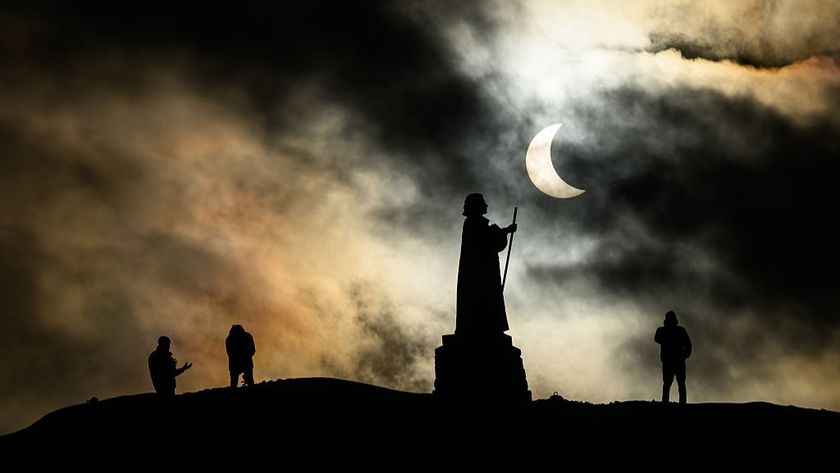Geminid meteor shower is underway. Here's what to expect from one of the best meteor showers of the year
The Geminids are regarded to be one of the most reliable meteor showers each year.

One of the most reliable meteor showers to light up our night sky each year has begun!
The annual Geminid meteor shower runs from Nov. 19 through Dec. 24, with the peak coming overnight on Dec. 13-14, according to the American Meteor Society. During the peak, over 100 Geminid meteors can be seen per hour under the right conditions. The Geminids are somewhat rare in that they are produced by debris from an asteroid, known as 3200 Phaeton. Most other meteor showers, on the other hand, are produced by the leftover bits of comets.
The Geminids are one of the best and most reliable annual meteor showers, according to NASA, making the next month one of the best times to get out at night and catch a glimpse of one of these "shooting stars." Want to see the Geminids for yourself? Here's what you need to know.
Bill Cooke is a NASA astronomer who leads the agency's Meteoroid Environment Office at the Marshall Space Flight Center in Huntsville, Alabama. Cooke previously told Space.com that the Geminids are one of the top three meteor showers to look out for in 2024.
However, a bright waxing gibbous moon will be just above the twins of Gemini on Dec. 13, which will interfere with the peak of this shower. Still, even while the moon lights the night sky, a large number of bright meteors should be visible during the peak.
As their name implies, the Geminid meteor shower originates from the Gemini constellation. Gemini remains visible throughout the night for the northern hemisphere over the next month, just above the raised arm of the Orion constellation.
If you aren't familiar with the Gemini constellation, now is the perfect time to look for its two most distinctive stars: Castor and Pollux, known as the "twins" of Gemini. If you need help locating it, you could always use a stargazing app.
Get the Space.com Newsletter
Breaking space news, the latest updates on rocket launches, skywatching events and more!

The constellation is most often depicted as a pair of brothers holding hands or placing their hands on one another's shoulders. According to Greek mythology, Castor and Pollux were the twin sons of Leda, Queen of Sparta. Castor was the son of Tyndareus, king of Sparta, while Pollux was the son of the powerful god Zeus.
After the mortal Castor fell in battle, Pollux prayed to Zeus to make his brother immortal. The only way this could be done would require Pollux to give up his immortality, so Zeus transformed the pair into the stars we now see in the night sky.

To maximize your chances of seeing Geminid meteors, you need to find a place that is as dark as possible and free from major sources of light pollution.
Because it's winter, you'll want to dress for the cold and maybe even bring a blanket or hot beverage. Get a comfortable seat, preferably allowing you to lie back as far as possible in order to take in as much of the night sky as possible, and align yourself so that you face the direction of the Gemini constellation (it will vary depending on your location).
Be patient, and be sure to give your eyes time to adjust to the dark. With a bit of persistence and luck, you should be able to catch sight of a few 'shooting stars' this year during the Geminid meteor shower.
If you want to try your hand at capturing the Geminids on camera, we can help. Check out our how to photograph meteors and meteor showers guide and if you need imaging gear, consider our best cameras for astrophotography and best lenses for astrophotography.
Editor's note: If you capture an amazing view of the Geminid meteor shower or any other night sky view that you would like to share with Space.com for a possible story or gallery, send images and comments to: spacephotos@space.com.
Join our Space Forums to keep talking space on the latest missions, night sky and more! And if you have a news tip, correction or comment, let us know at: community@space.com.

Brett is curious about emerging aerospace technologies, alternative launch concepts, military space developments and uncrewed aircraft systems. Brett's work has appeared on Scientific American, The War Zone, Popular Science, the History Channel, Science Discovery and more. Brett has English degrees from Clemson University and the University of North Carolina at Charlotte. In his free time, Brett enjoys skywatching throughout the dark skies of the Appalachian mountains.











